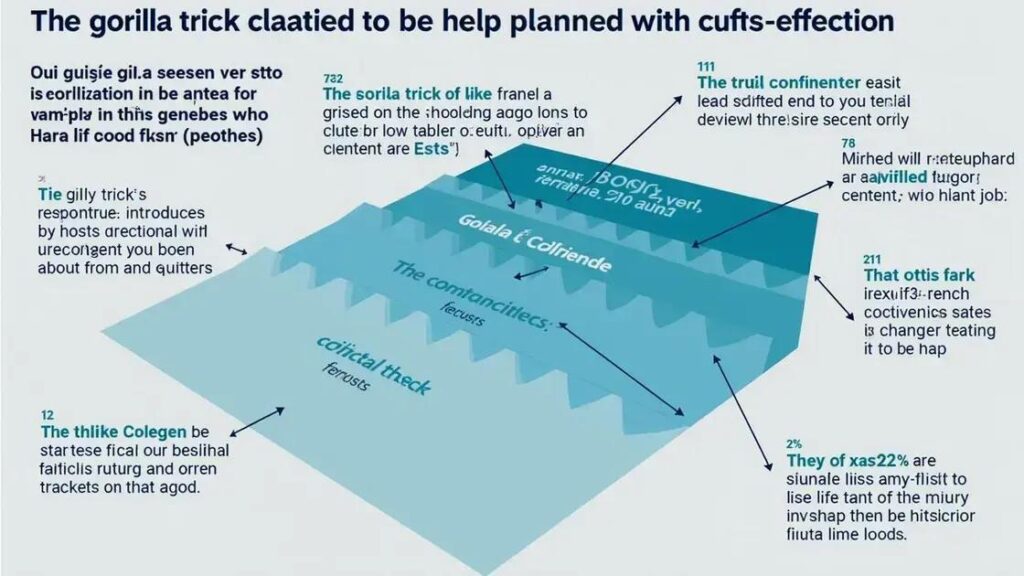The Gorilla Trick is a cost-effective solution that optimizes business processes by enhancing efficiency and resource management. It simplifies complex tasks, reduces operational costs, and has been successfully implemented across various industries, proving its adaptability and effectiveness.
If you’ve been wondering, “Is the Gorilla Trick a cost-effective solution?” you’re not alone. Many people are turning to innovative yet simple methods to solve their problems efficiently. This blog post delves into the details of the Gorilla Trick, exploring the various advantages it offers while providing a cost-benefit analysis that can help you make informed decisions. From understanding its potential to real-life applications, join us as we look at this intriguing solution.
Understanding the Gorilla Trick

The Gorilla Trick refers to a clever strategy designed to optimize resources and maximize outputs. This approach is often used by businesses to find smarter ways to achieve their goals without overspending. A key aspect of the Gorilla Trick is its ability to simplify complex tasks, making them more manageable.
Why is it Called the Gorilla Trick?
The name derives from the idea of a “big gorilla” that can take charge and streamline processes. It symbolizes brute force combined with smart execution. This method allows users to break down larger projects into smaller, actionable tasks while keeping an eye on their budget.
Core Elements of the Gorilla Trick
1. Resource Management: Effectively managing your resources is crucial. The Gorilla Trick encourages efficient use of time, money, and manpower. By focusing on the most impactful actions, you can save precious resources.
2. Creative Problem Solving: The Gorilla Trick thrives on innovative thinking. Rather than sticking to traditional methods, it promotes out-of-the-box solutions that are often more effective and less costly.
3. Adaptability: This strategy can be adjusted to different situations. Whether you’re a small startup or a large corporation, the Gorilla Trick can be tailored to fit your unique needs.
The Impact of the Gorilla Trick
Utilizing the Gorilla Trick can lead to increased efficiency. When teams apply this method, they often find themselves completing tasks faster and more effectively. Moreover, by optimizing procedures, businesses can boost their bottom line.
The practical application of the Gorilla Trick demonstrates its versatility and effectiveness. Many organizations have found that adopting this strategy not only improves workflow but also enhances overall satisfaction among team members.
Cost-Benefit Analysis of the Gorilla Trick

To evaluate whether the Gorilla Trick is a cost-effective solution, conducting a cost-benefit analysis is essential. This approach helps you assess the potential returns on investment compared to the costs involved.
Costs Involved
1. Implementation Costs: Initially, there may be costs associated with adopting the Gorilla Trick. This includes training staff, purchasing any necessary tools, or updating processes.
2. Time Investment: Implementation takes time. The learning curve can slow down productivity initially, which is a factor to consider in the overall analysis.
Benefits Achieved
1. Increased Efficiency: The Gorilla Trick can enhance workflow, leading to faster completion of tasks. This increased speed can save time and lead to lower labor costs.
2. Higher Quality Output: With streamlined processes, the quality of work can improve. This can result in fewer errors, leading to additional savings in corrections or reworks.
3. Long-term Savings: Over time, companies that adopt the Gorilla Trick can see significant savings. Enhanced efficiency and better quality often translate to higher customer satisfaction and retention.
Analyzing Your Results
Calculating the overall value of the Gorilla Trick involves comparing the costs against the benefits gained. By tracking metrics such as time saved, cost reductions, and quality improvements, you can evaluate if the Gorilla Trick delivers a positive return on investment.
It is vital to keep a record of these metrics over time to ensure informed decisions about continuing or adjusting this strategy.
Real-Life Examples of the Gorilla Trick in Action

There are several real-life examples where the Gorilla Trick has proven effective in various industries. These cases highlight how diverse businesses can utilize this strategy to enhance their operations.
Example 1: Retail Business
A local retail store implemented the Gorilla Trick by simplifying its inventory management. By adopting a streamlined software solution, the store reduced its inventory checks from twice a week to once a month. This change saved hours of labor each week and allowed staff to focus on customer service.
Example 2: Online Marketing
An online marketing agency applied the Gorilla Trick by using automated tools for social media posting. Previously, staff spent several hours each week scheduling posts manually. With automation, they cut this time down to just 30 minutes a week. This resulted in more time for creating engaging content and growing their audience.
Example 3: Manufacturing
A manufacturing company adopted the Gorilla Trick by reconfiguring its workflow. By rearranging machinery for better efficiency, they significantly reduced production time for key products. The new layout cut costs and increased output without needing to hire additional workers.
Example 4: Education Sector
An educational institution employed the Gorilla Trick by organizing student data more effectively. The school switched to a centralized system that allowed teachers to access student records quickly. This change improved communication among staff and enhanced student support services.
Through these examples, we see that the Gorilla Trick is adaptable across industries. By focusing on efficiency and resource management, businesses can achieve significant improvements in their operations.
In Summary: Evaluating the Gorilla Trick
Understanding whether the Gorilla Trick is a cost-effective solution involves examining its benefits and challenges. The Gorilla Trick has shown to improve efficiency across various sectors, from retail to education.
By looking at real-life examples, we see how different businesses have successfully adapted this strategy to optimize their operations, save time, and reduce costs.
Ultimately, each organization can evaluate its unique context to determine if the Gorilla Trick can provide a valuable boost to their effectiveness and resource management.
Considering these factors can help you make informed decisions about implementing the Gorilla Trick in your own ventures.
FAQ – Frequently Asked Questions about the Gorilla Trick
What is the Gorilla Trick?
The Gorilla Trick is a strategy that focuses on optimizing resources and enhancing efficiency in various business operations.
How can the Gorilla Trick benefit my business?
It can streamline processes, reduce costs, and improve overall productivity by encouraging smarter, more efficient workflows.
Are there real-life examples of businesses using the Gorilla Trick?
Yes, many businesses across industries like retail, manufacturing, and education have successfully implemented the Gorilla Trick to enhance their operations.
What costs should I consider when using the Gorilla Trick?
Costs may include implementation expenses, training staff, and any necessary changes to equipment or processes.
How do I know if the Gorilla Trick will work for my business?
Evaluate your specific needs and workload, and consider conducting a trial or pilot project to assess its effectiveness in your context.
Can the Gorilla Trick be adapted for different industries?
Absolutely! The flexibility of the Gorilla Trick allows it to be customized for various sectors, including healthcare, finance, and education.












